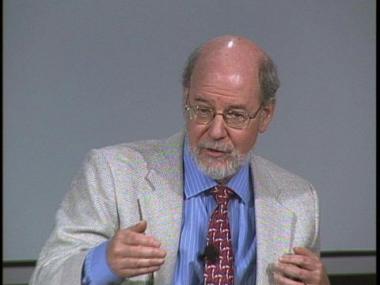
|
Lunch with a Laureate: Robert Horvitz
As an undergraduate at MIT, Robert Horvitz did not take a biology course until his senior year. But after only six weeks into his first class with professor Cy Leventhal, he realized this was the field for him. He boldly asked for a recommendation as part of his application to grad school—in biology. “Is it too late?” he wanted to know. Professor Leventhal explained that his own undergraduate and graduate degrees had been in physics and that Horvitz would, in fact, be “starting early.” It was his work in Cambridge, England, however, that set the stage for the discoveries for which he would receive the Nobel Prize in 2002. Here he worked with Sidney Brenner and John Sulston on a phenomenon called “programmed cell death” or apoptosis. Cell death occurs naturally as part of the genetic program of every cell—a tadpole loses its tail as it turns into a frog, a bird that doesn’t need webbed feet loses the webbing as it develops. But for many years biologists ignored this behavior thinking that they must be doing something wrong when cells they were studying died.  When Horvitz first began work on the analysis of programmed cell death, he didn’t study human or animal diseases. Instead, he relied on a tiny nematode—C. elegans—only 1mm in length and comprised of exactly 959 cells. He had been warned that C. elegans was obscure and that using it would be a “scientific dead end.” Nonetheless, this creature proved to be the perfect “research subject” for the genetic and molecular work he did in understanding apoptosis. “It’s very easy to study an organism . . . that simple.” Today cell death—cellular suicide—is recognized as a normal part of the development and biology of animal cells. Disease, on the other hand, is seen as an abnormality in the regulation of programmed cell death. According to Horvitz, diseases come in “two flavors”—cells in which there is too little programmed cell death (cells that should die, instead live) and cells in which there is too much ...
Video Length: 0
Date Found: September 05, 2010
Date Produced: July 30, 2010
View Count: 1
|